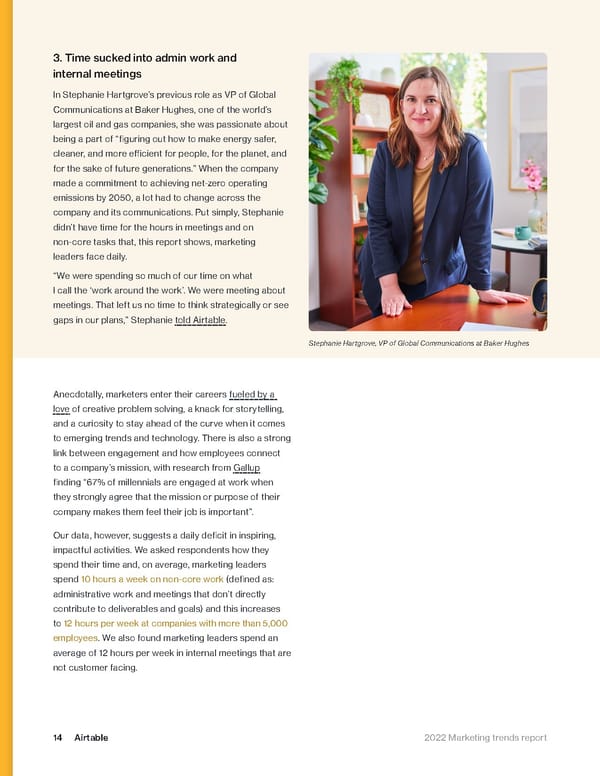3. Time sucked into admin work and internal meetings In Stephanie Hartgrove’s previous role as VP of Global Communications at Baker Hughes, one of the world’s largest oil and gas companies, she was passionate about being a part of “figuring out how to make energy safer, cleaner, and more efficient for people, for the planet, and for the sake of future generations.” When the company made a commitment to achieving net-zero operating emissions by 2050, a lot had to change across the company and its communications. Put simply, Stephanie didn’t have time for the hours in meetings and on non-core tasks that, this report shows, marketing leaders face daily. “We were spending so much of our time on what I call the ‘work around the work’. We were meeting about meetings. That left us no time to think strategically or see gaps in our plans,” Stephanie told Airtable. Stephanie Hartgrove, VP of Global Communications at Baker Hughes Anecdotally, marketers enter their careers fueled by a love of creative problem solving, a knack for storytelling, and a curiosity to stay ahead of the curve when it comes to emerging trends and technology. There is also a strong link between engagement and how employees connect to a company’s mission, with research from Gallup finding “67% of millennials are engaged at work when they strongly agree that the mission or purpose of their company makes them feel their job is important”. Our data, however, suggests a daily deficit in inspiring, impactful activities. We asked respondents how they spend their time and, on average, marketing leaders spend 10 hours a week on non-core work (defined as: administrative work and meetings that don’t directly contribute to deliverables and goals) and this increases to 12 hours per week at companies with more than 5,000 employees. We also found marketing leaders spend an average of 12 hours per week in internal meetings that are not customer facing. 14 Airtable 2022 Marketing trends report
 Airtable Marketing Trends Report 2022 Page 13 Page 15
Airtable Marketing Trends Report 2022 Page 13 Page 15